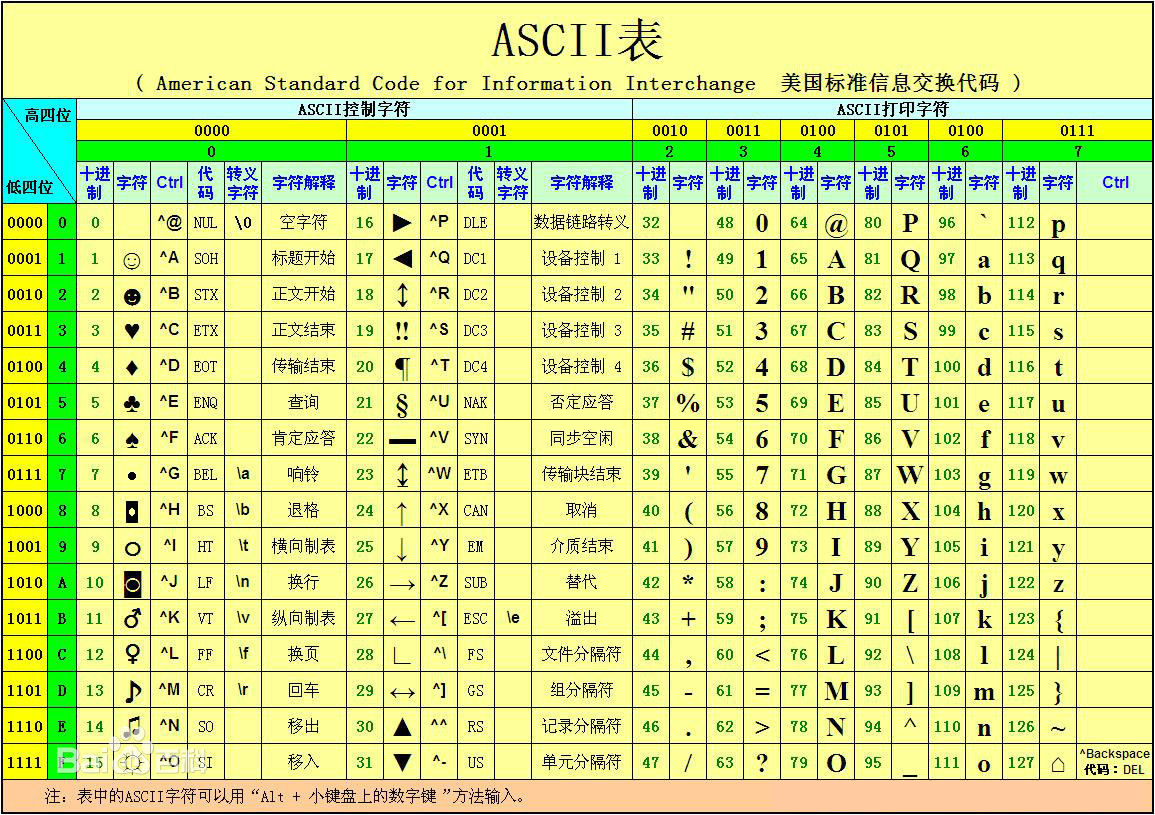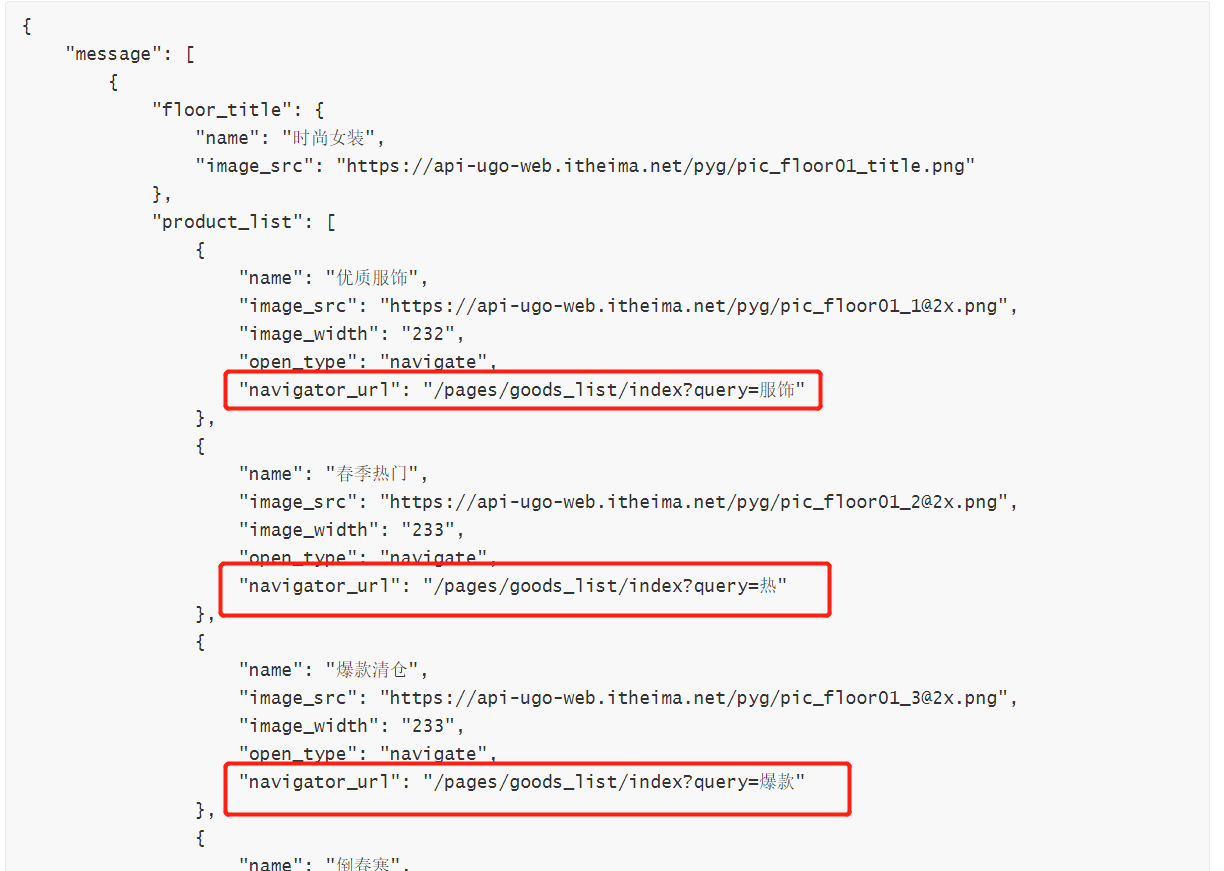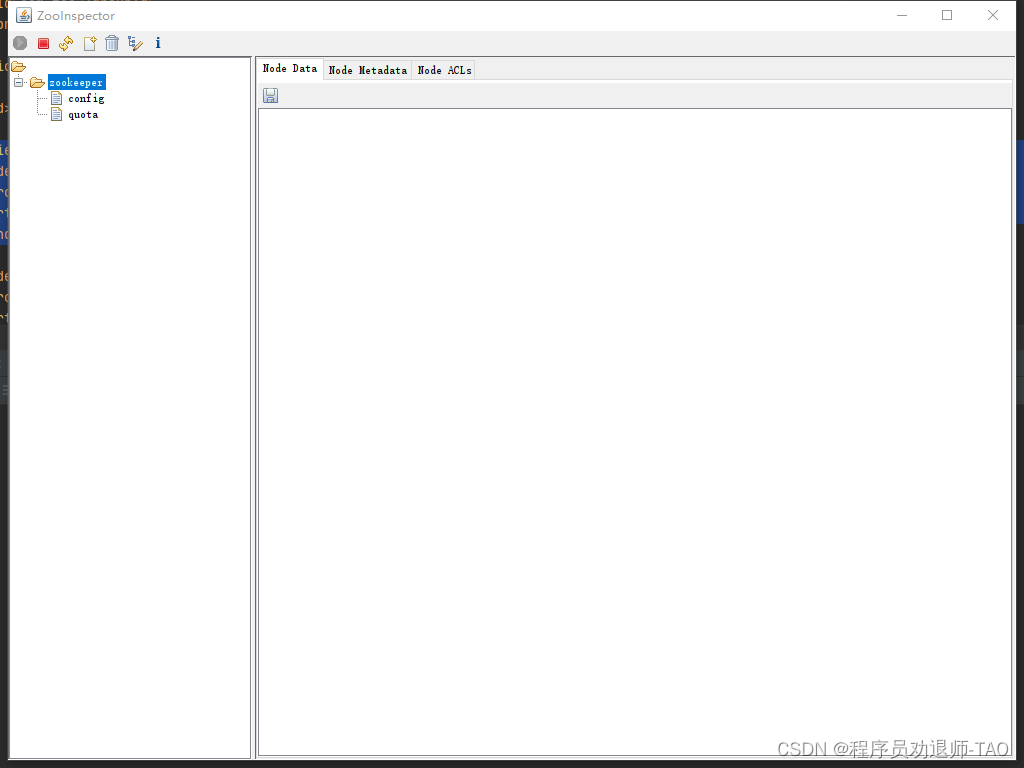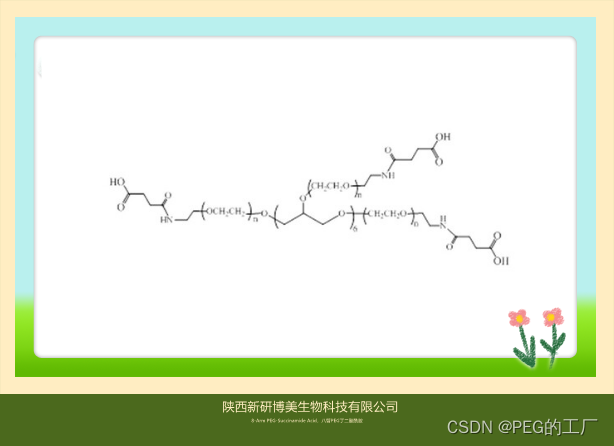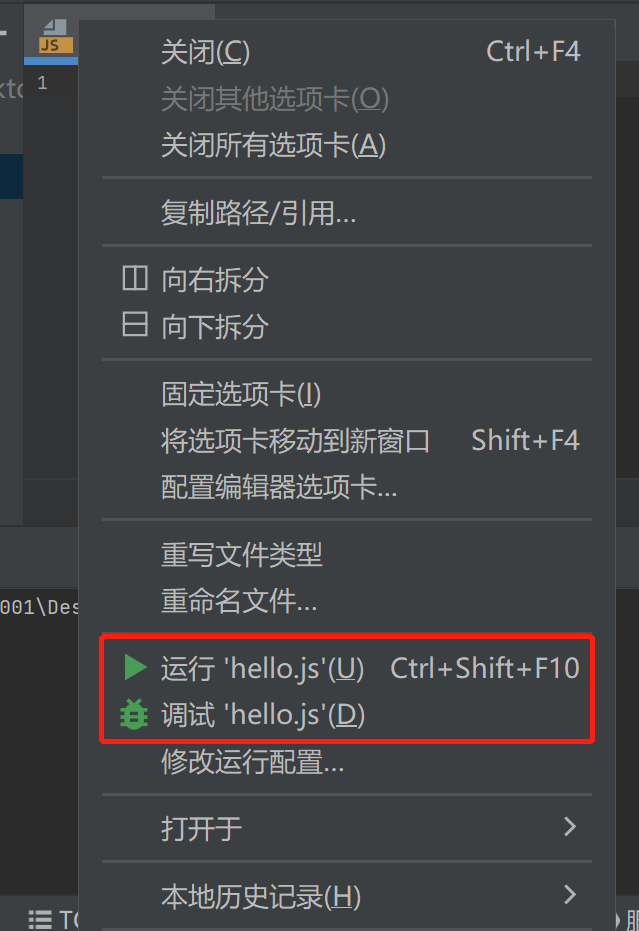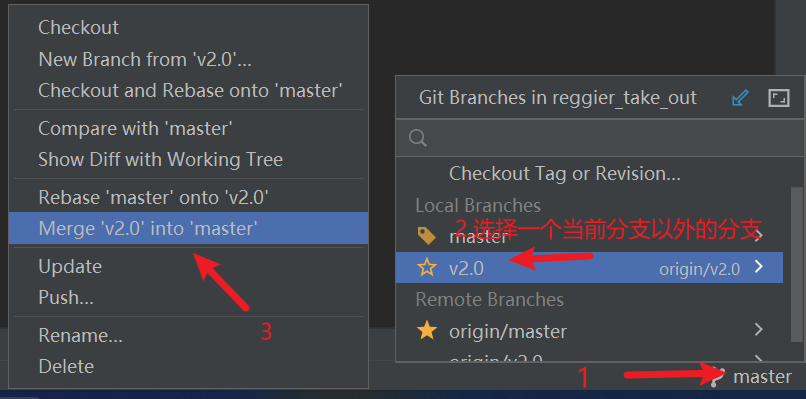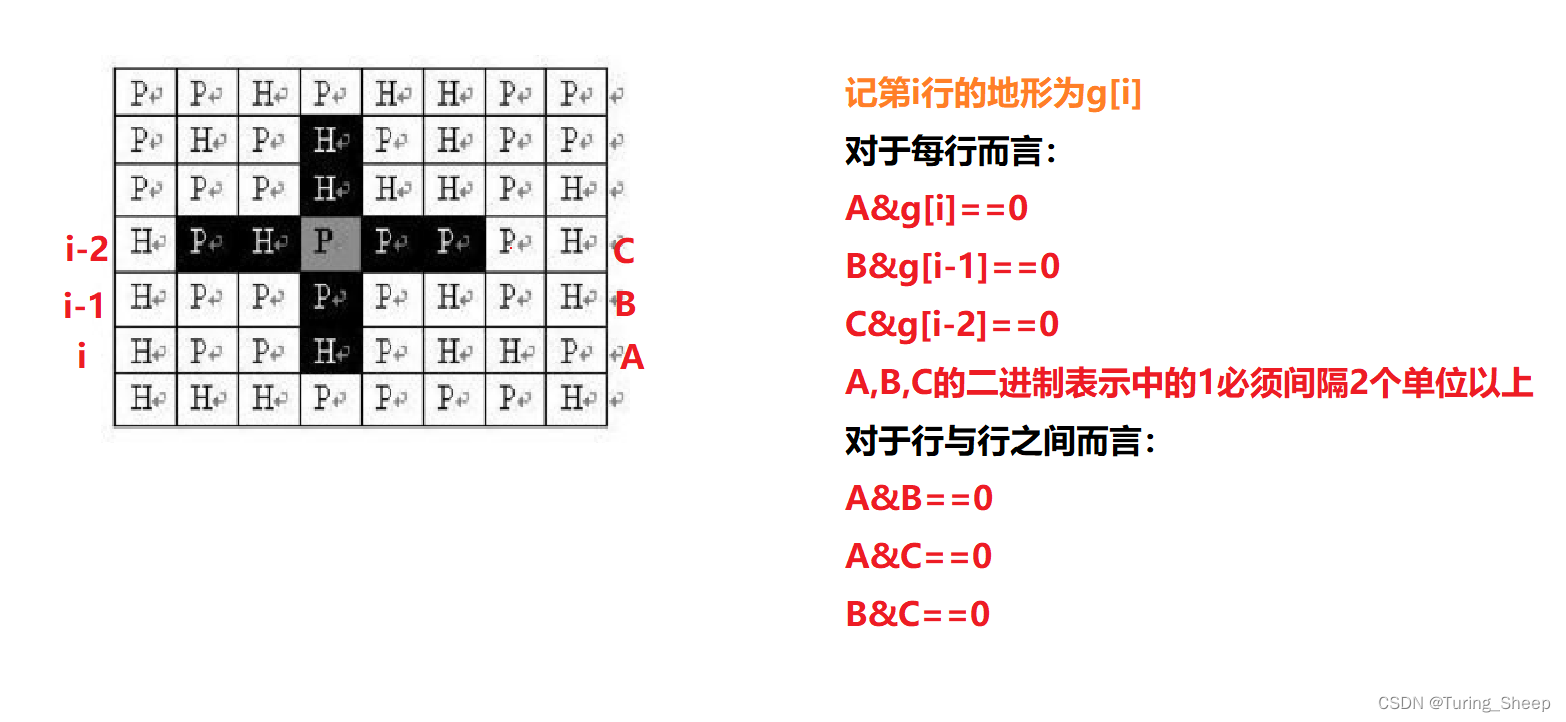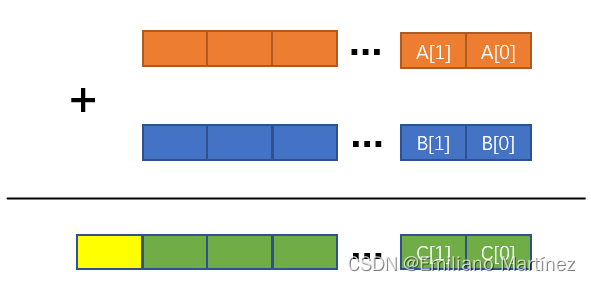📖 前言:STL(standard template libaray-标准模板库):是C++标准库的重要组成部分,不仅是一个可复用的组件库,而且一个包罗数据结构与算法的软件框架。

目录
- 🕒 1. string 概述
- 🕒 2. 标准库中的string类
- 🕒 3. string的常用接口
- 🕘 3.1 初始化
- 🕘 3.2 Iterators
- 🕤 3.2.1 正向迭代器
- 🕤 3.2.2 反向迭代器
- 🕤 3.2.3 const 迭代器
- 🕘 3.3 容量
- 🕤 3.3.1 扩容
- 🕘 3.4 元素访问
- 🕘 3.5 修改
- 🕘 3.6 操作
- 🕒 4. string类的应用
- 🕘 4.1 三种遍历方式
- 🕘 4.2 替换空格
- 🕘 4.3 取文件名后缀
- 🕘 4.4 getline的应用
- 🕒 5. string类的模拟实现
🕒 1. string 概述
string,就是比C语言好用的字符串,在C++中作为替代char*的存在,和前者比起来,不必担心内存是否足够、字符串长度等等,而且作为一个泛型类出现,他集成的操作函数足以完成我们大多数情况下的需要。
string类本身就是一个模板,是因为字符串的数组涉及编码问题,字符数组编码不同。所以需要模板。
u16string:表示两个字节
u32string:表示四个字节
这里简单了解一下编码
ASCII码 美国信息交换标准码。 ASCII码表是计算机存值和文字符号的对应关系 只有256个字符
Unicode 万国码:Unicode是为了解决传统的字符编码方案的局限而产生的,它为每种语言中的每个字符设定了统一并且唯一的二进制编码
包括了utf-8,utf-16,utf-32 utf-8兼容了ASCII,utf-8使用比较普遍,也比较节省空间gbk 国标:针对中文而设计的编码。采用双字节编码。
🕒 2. 标准库中的string类
string是个类,是模板的实例化
C++中对于string的定义为:typedef basic_string<char> string; 也就是说C++中的string类是一个泛型类,由模板而实例化的一个标准类,本质上不是一个标准数据类型。
在使用 string 类时,必须包含 #include<string> 以及 using namespace std;
🔎 C++在线文档关于string类的介绍
🕒 3. string的常用接口
🕘 3.1 初始化
函数名称 功能说明 string() (重点) 构造空的string类对象,即空字符串 string(const char* s) (重点) 用C-string来构造string类对象 string(const char* s, size_t n) 从s中选择前n个字符初始化 string(size_t n, char c) string类对象中包含n个字符c string(const string& str) (重点) 拷贝构造函数 string(const string& str, size_t pos, size_t len = npos) 在str中从pos开始拷贝len个字符,如果len>str长度,就取完,npos是缺省值(-1),即取完 \begin{array}{|c|c|} \hline \text { 函数名称 } & \text { 功能说明 } \\ \hline \text { string() (重点) } & \text { 构造空的string类对象,即空字符串 } \\ \hline \text { string(const char* s) (重点) } & \text { 用C-string来构造string类对象 } \\ \hline \text { string(const char* s, size\_t n) } & \text { 从s中选择前n个字符初始化 } \\ \hline \text { string(size\_t n, char c) } & \text { string类对象中包含n个字符c } \\ \hline \text { string(const string\& str) (重点)} & \text { 拷贝构造函数 } \\ \hline \text { string(const string\& str, size\_t pos, size\_t len = npos) } & \text { 在str中从pos开始拷贝len个字符,如果len>str长度,就取完,npos是缺省值(-1),即取完 } \\ \hline \end{array} 函数名称 string() (重点) string(const char* s) (重点) string(const char* s, size_t n) string(size_t n, char c) string(const string& str) (重点) string(const string& str, size_t pos, size_t len = npos) 功能说明 构造空的string类对象,即空字符串 用C-string来构造string类对象 从s中选择前n个字符初始化 string类对象中包含n个字符c 拷贝构造函数 在str中从pos开始拷贝len个字符,如果len>str长度,就取完,npos是缺省值(-1),即取完
void test1()
{
string s1; // 构造空字符串
string s2("广州市海珠区"); // 用字符数组来构造string类对象
string s3 = "广州市海珠区";// 同上
string s4(10, '*'); // 用10个*初始化
string s5(s2); // 拷贝构造
string s6 = s2; // 拷贝构造
//cout << s1 << endl;
cout << s2 << endl; // 流提取
//cout << s3 << endl;
cout << s4 << endl;
cout << s5 << " " << s6 << endl;
s2 += "滨江街道";
cout << s2 << endl;
string s7("Hello World!", 5);
cout << s7 << endl;
string s8(s7, 2, 3); // 在s7中从第2个位置开始走3个字符
cout << s8 << endl;
string s9(s7, 2, 30); // 在s7中从第2个位置开始走30个字符
cout << s9 << endl;
string s10(s7, 2 ); // 在s7中从第2个位置开始走完(缺省值是-1,即可以认为全部走完)
cout << s10 << endl;
}

🕘 3.2 Iterators
Iterators 是C++中的迭代器,它可以遍历读写数据,是通用的访问形式(不止string,后面vector、list都还是会用到),大家可以把它当成指针来理解,当然,并不是所有迭代器的底层都是用指针实现的。值得注意的是,这里不能使用char*,因为迭代器的底层不一定是char*的方式实现(虽然VS可以,但是其他平台未必相同)。
函数名称 功能说明 begin() 返回一个指向字符串中第一个字符的迭代器 end() 返回一个指向字符串最后一个字符下一个位置(’ \ 0 ’)的迭代器 rbegin() 反向迭代器,返回一个指向字符串最后一个字符下一个位置(’ \ 0 ’)的迭代器 rend() 反向迭代器,返回一个指向字符串中第一个字符的迭代器 \begin{array}{|c|c|} \hline \text { 函数名称 } & \text { 功能说明 } \\ \hline \text { begin() } & \text { 返回一个指向字符串中第一个字符的迭代器 } \\ \hline \text { end() } & \text { 返回一个指向字符串最后一个字符下一个位置(’ } \backslash 0 \text{’)的迭代器 } \\ \hline \text { rbegin() } & \text { 反向迭代器,返回一个指向字符串最后一个字符下一个位置(’ } \backslash 0 \text{’)的迭代器 } \\ \hline \text { rend() } & \text { 反向迭代器,返回一个指向字符串中第一个字符的迭代器 } \\ \hline \end{array} 函数名称 begin() end() rbegin() rend() 功能说明 返回一个指向字符串中第一个字符的迭代器 返回一个指向字符串最后一个字符下一个位置(’ \0’)的迭代器 反向迭代器,返回一个指向字符串最后一个字符下一个位置(’ \0’)的迭代器 反向迭代器,返回一个指向字符串中第一个字符的迭代器
注意:为了使 const 对象也能调用,每个迭代器函数都设计了 const 版本
这里我们可以小结一下功能函数需要的版本:
- 只读功能函数 const版本(比如:
size)- 只写功能函数 非const版本(比如:
push_back)- 读写功能函数 const+非const版本(比如:
operator[])
> std::string::begin
iterator begin(); //用法1
const_iterator begin(); //用法2
> std::string::end
iterator end(); //用法1
const_iterator end(); //用法2
> std::string::rbegin
reverse_iterator rbegin(); //用法1
const_reverse_iterator rbegin(); //用法2
> std::string::rend
reverse_iterator rend(); //用法1
const_reverse_iterator rend(); //用法2
🕤 3.2.1 正向迭代器
void testForward()
{
string s1("1234");
string::iterator it1 = s1.begin();//s.begin() 返回字符串s第一个字符的位置
while (it1 != s1.end())//s.end() 返回字符串s最后一个字符串的后一个位置
{
*it1 += 1;
++it1;
}
it1 = s1.begin();
while (it1 != s1.end())
{
cout << *it1 << " ";
++it1;
} // 输出:2 3 4 5
}
🕤 3.2.2 反向迭代器
反向迭代器访问顺序与默认的迭代器相反。
void testBack()
{
string s1("1234");
string::reverse_iterator rit = s1.rbegin();
// auto rit = s1.rbegin(); // 简化写法
while (rit != s1.rend())
{
cout << *rit << " ";
++rit;
} // 输出: 4 3 2 1
}
对于定义名过长的问题,我们也可以用auto去定义变量rit接收rbegin()。不过嘛,这样可读性就会变差(学了Python就懂了[doge])。
🕤 3.2.3 const 迭代器
顾名思义,只能遍历,不能修改容器数据,包括正向和反向
void Print(const string& s)
{
// 遍历读,不支持写
string::const_iterator it = s.begin(); // 正向
//const string::iterator it = s.begin(); // 错误写法
while (it != s.end())
{
// *it += 1; // 编译不通过
cout << *it << " "; // 输出:1 2 3 4
++it;
}
cout << endl;
//string::const_reverse_iterator rit = s.rbegin();
auto rit = s.rbegin(); // 反向
while (rit != s.rend())
{
cout << *rit << " "; // 输出:4 3 2 1
++rit;
}
cout << endl;
}
int main()
{
string s1("1234");
Print(s1); // 传引用
return 0;
}
这里看过C++文档网站的可能要问了,还有个带c的版本没讲嘞。
其实就是名称区分一下,让你一眼就看出是const版本的迭代器。
🕘 3.3 容量
函数名称 功能说明 size(重点) 返回字符串有效字符长度 length 返回字符串有效字符长度 capacity 返回空间总大小 empty (重点) 检测字符串是否为空串,是返回true,否则返回false clear (重点) 清空有效字符 reserve (重点) 为字符串预留空间 resize (重点) 将有效字符的个数改成n个,多出的空间用 \ 0 或指定字符填充 shrink_to_fit 改变capacity使其与size保持一致 \begin{array}{|c|c|} \hline \text { 函数名称 } & \text { 功能说明 } \\ \hline \text { size(重点) } & \text { 返回字符串有效字符长度 } \\ \hline \text { length } & \text { 返回字符串有效字符长度} \\ \hline \text { capacity } & \text { 返回空间总大小 } \\ \hline \text { empty (重点)} & \text { 检测字符串是否为空串,是返回true,否则返回false } \\ \hline \text { clear (重点) } & \text { 清空有效字符 } \\ \hline \text { reserve (重点) } & \text { 为字符串预留空间 } \\ \hline \text { resize (重点) } & \text { 将有效字符的个数改成n个,多出的空间用} \backslash 0 \text{ 或指定字符填充 } \\ \hline \text { shrink\_to\_fit } & \text { 改变capacity使其与size保持一致 } \\ \hline \end{array} 函数名称 size(重点) length capacity empty (重点) clear (重点) reserve (重点) resize (重点) shrink_to_fit 功能说明 返回字符串有效字符长度 返回字符串有效字符长度 返回空间总大小 检测字符串是否为空串,是返回true,否则返回false 清空有效字符 为字符串预留空间 将有效字符的个数改成n个,多出的空间用\0 或指定字符填充 改变capacity使其与size保持一致
size和length
由于历史原因,最开始只有length,但随着STL的扩充,其他如树就不太适合用“长度”来描述,为了普适性,统一用size来实现。自然,其他比如vector这些就没有length了。
clear
- clear 函数用来清空字符串,即将 size 改为0,至于是否会改变 capacity,标准也未规定,在VS2019是没有改变的
resize
resize 函数用来调整字符串大小,它一共分为三种情况:
- n < size,删除数据,将原字符串的 size 改为 n,但不会改变 capacity;
- n > size,但 < capacity,插入数据,将 size 后面的空间全部设置为
\0; - n > capacity,扩容+插入数据,然后将size 后面的空间全部设置为
\0;
注:s.resize(n,'c'),其中n > size,但 < capacity:表示插入数据,将 size 后面的空间全部设置为字符c;
reserve
reserve 用来扩容与预留空间,相当于C语言中的 realloc 函数,它分两种情况:
- n 大于原字符串的 capacity,此时 reserve 函数会将 capacity 扩容到 n;
- n 小于等于原字符串的 capacity,标准未规定是否要缩容 (VS下不缩容);
🕤 3.3.1 扩容
我们可以观察一下尾插是怎么扩容的。
void TestPushBack()
{
string s;
// s.reserve(100) // 直接设置指定容量
size_t sz = s.capacity();
for (int i = 0; i < 100; ++i)
{
s.push_back('c');
if (sz != s.capacity())
{
sz = s.capacity();
cout << sz << " "; // 输出:31 47 70 105
}
}
}
可以看到,大概是以1.5倍增长,其中容量没有计入\0,即32-1=31。
不同平台的n倍值不同,比如g++是2倍(计入\0)。
🕘 3.4 元素访问
函数名称 功能说明 operator[] (重点) 返回pos位置的字符,const string类对象调用,越界就assert报错 at 功能同上,但是越界了会抛异常 begin+ end begin获取一个字符的迭代器 + end获取最后一个字符下一个位置的迭代器 rbegin + rend rbegin获取一个字符的迭代器 + rend获取最后一个字符下一个位置的迭代器 范围for C++11支持更简洁的范围for的新遍历方式 \begin{array}{|c|c|} \hline \text { 函数名称 } & \text { 功能说明 } \\ \hline \text { operator[] (重点) } & \text { 返回pos位置的字符,const string类对象调用,越界就assert报错 } \\ \hline \text { at } & \text { 功能同上,但是越界了会抛异常 } \\ \hline \text { begin+ end } & \text { begin获取一个字符的迭代器 + end获取最后一个字符下一个位置的迭代器} \\ \hline \text { rbegin + rend } & \text { rbegin获取一个字符的迭代器 + rend获取最后一个字符下一个位置的迭代器 } \\ \hline \text { 范围for } & \text { C++11支持更简洁的范围for的新遍历方式 } \\ \hline \end{array} 函数名称 operator[] (重点) at begin+ end rbegin + rend 范围for 功能说明 返回pos位置的字符,const string类对象调用,越界就assert报错 功能同上,但是越界了会抛异常 begin获取一个字符的迭代器 + end获取最后一个字符下一个位置的迭代器 rbegin获取一个字符的迭代器 + rend获取最后一个字符下一个位置的迭代器 C++11支持更简洁的范围for的新遍历方式
🕘 3.5 修改
函数名称 功能说明 push_back 在字符串后尾插字符c append 在字符串后追加一个字符串 operator+= (重点) 在字符串后追加字符串str assign 清除原内容并赋值 replace 选中被赋值区域后替换 insert 向在字符串的 pos 处插入数据 erase 从 pos 位置开始向后删除 len 个字符 \begin{array}{|c|c|} \hline \text { 函数名称 } & \text { 功能说明 } \\ \hline \text { push\_back } & \text { 在字符串后尾插字符c } \\ \hline \text { append } & \text { 在字符串后追加一个字符串} \\ \hline \text { operator+= (重点) } & \text { 在字符串后追加字符串str } \\ \hline \text { assign } & \text { 清除原内容并赋值} \\ \hline \text { replace } & \text { 选中被赋值区域后替换} \\ \hline \text { insert } & \text { 向在字符串的 pos 处插入数据 } \\ \hline \text { erase } & \text { 从 pos 位置开始向后删除 len 个字符 } \\ \hline \end{array} 函数名称 push_back append operator+= (重点) assign replace insert erase 功能说明 在字符串后尾插字符c 在字符串后追加一个字符串 在字符串后追加字符串str 清除原内容并赋值 选中被赋值区域后替换 向在字符串的 pos 处插入数据 从 pos 位置开始向后删除 len 个字符
void test_stringModify()
{
string s1("hello world");
s1 += '!';
s1.push_back(' ');
s1 += "hello world"; // 推荐这种写法
cout << s1 << endl; // 输出:hello world! hello world
string s2("!!!");
s1 += s2;
cout << s1 << endl; // 输出:hello world! hello world!!!
s1.erase(13, 14); // (pos, len)
s1.insert(0, "C++ "); // (pos, str)
cout << s1 << endl; // 输出:C++ hello world!
s1.replace(0, 3, "Python"); //
cout << s1 << endl; // 输出:Python hello world!
s1.assign("Hello C++", 5); // 清除原内容并赋值前5个
cout << s1 << endl; // 输出:Hello
}
🕘 3.6 操作
函数名称 功能说明 assign 清除原内容并赋值 replace 选中被赋值区域后替换 insert 向在字符串的 pos 处插入数据 erase 从 pos 位置开始向后删除 len 个字符 c_str(重点) 返回C格式字符串 find + npos(重点) 从字符串pos位置开始往后找字符c,返回该字符在字符串中的位置 rfind 从字符串pos位置开始往前找字符c,返回该字符在字符串中的位置 substr 在str中从pos位置开始,截取n个字符,然后将其返回 \begin{array}{|c|c|} \hline \text { 函数名称 } & \text { 功能说明 } \\ \hline \text { assign } & \text { 清除原内容并赋值} \\ \hline \text { replace } & \text { 选中被赋值区域后替换} \\ \hline \text { insert } & \text { 向在字符串的 pos 处插入数据 } \\ \hline \text { erase } & \text { 从 pos 位置开始向后删除 len 个字符 } \\ \hline \text { c\_str(重点) } & \text { 返回C格式字符串 } \\ \hline \text { find + npos(重点) } & \text { 从字符串pos位置开始往后找字符c,返回该字符在字符串中的位置 } \\ \hline \text { rfind } & \text { 从字符串pos位置开始往前找字符c,返回该字符在字符串中的位置 } \\ \hline \text { substr } & \text { 在str中从pos位置开始,截取n个字符,然后将其返回 } \\ \hline \end{array} 函数名称 assign replace insert erase c_str(重点) find + npos(重点) rfind substr 功能说明 清除原内容并赋值 选中被赋值区域后替换 向在字符串的 pos 处插入数据 从 pos 位置开始向后删除 len 个字符 返回C格式字符串 从字符串pos位置开始往后找字符c,返回该字符在字符串中的位置 从字符串pos位置开始往前找字符c,返回该字符在字符串中的位置 在str中从pos位置开始,截取n个字符,然后将其返回
void test_stringOperations()
{
string s1("hello world");
string s2("hello world! hello world");
size_t pos = s2.find(' ');
while (pos != string::npos)
{
s2.replace(pos, 1, "~~~"); // 把空格替换为~~~
pos = s2.find(' ', pos + 3);
}
cout << s2 << endl; // 输出:hello~~~world!~~~hello~~~world
string file("test.cpp");
FILE* fout = fopen(file.c_str(), "r");
assert(fout);
char ch = fgetc(fout);
while (ch != EOF)
{
cout << ch;
ch = fgetc(fout);
}
fclose(fout);
}
关于c_str的用途简介
一些线程,网络,Linux内核等都是通过C实现的,因此c_str很好的充当了一个C++中string与C之间的互通,因为我们知道,对于string定义的变量名,不是内部字符串的地址,因此就出现了c_str()返回内容的地址,从而解决这个问题。
🕒 4. string类的应用
🕘 4.1 三种遍历方式
有了迭代器之后,我们就可以使用迭代器来遍历与修改字符串了:
void testgo()
{
string s1("1234");
// 遍历它
// 1.下标[]
for (size_t i = 0; i < s1.size(); ++i)
{
s1[i]++; // 每个数字+1,实际上这是operator[]()的运算符重载
}
cout << s1 << endl; // 输出:2345
// 2.范围for
for (auto& ch : s1)
{
ch--; // 每个数字-1
}
cout << s1 << endl; // 输出:1234
// 反转一下
size_t begin = 0, end = s1.size() - 1;
while (begin < end)
{
swap(s1[begin++], s1[end--]);
}
cout << s1 << endl; // 输出:4321
reverse(s1.begin(), s1.end()); // 一键反转
cout << s1 << endl; // 输出:1234
// 3、迭代器 -- 通用的访问形式
string::iterator it1 = s1.begin();
while (it1 != s1.end())
{
*it1 += 1;
++it1;
}
it1 = s1.begin();
while (it1 != s1.end())
{
cout << *it1 << " ";
++it1;
}
cout << endl;
vector<int> v;
vector<int>::iterator vit = v.begin();
while (vit != v.end())
{
cout << *vit << " "; // 输出:2 3 4 5
vit++;
}
cout << endl;
list<int> lt; // 仅演示。还没放数据
list<int>::iterator ltit = lt.begin();
while (ltit != lt.end())
{
cout << *ltit << " ";
ltit++;
}
cout << endl;
}
🕘 4.2 替换空格
🔎 替换空格
class Solution {
public:
string replaceSpace(string s) {
size_t pos = s.find(' ');
while(pos != string::npos)
{
s.replace(pos, 1, "%20");
pos = s.find(' ',pos+3); // 优化
}
return s;
}
};
🕘 4.3 取文件名后缀
void test_stringSuffix() // 取文件后缀
{
// "Test.cpp" ①
// "Test.cpp.tar" ②
string file;
cin >> file;
//size_t pos = file.find('.'); // 遇到②的情况就不行了
size_t pos = file.rfind('.'); // 倒着找
if (pos != string::npos)
{
//string suffix = file.substr(pos, file.size() - pos);
string suffix = file.substr(pos); // 缺省参数
cout << suffix << endl;
}
}
🕘 4.4 getline的应用
🔎 HJ1 字符串最后一个单词的长度
getline可以获取一行字符串,到换行符时才结束输入
#include <iostream>
using namespace std;
int main() {
string str;
//cin>>str;
getline(cin, str);
size_t pos = str.rfind(' ');
cout<<str.size()-pos-1<<endl;
return 0;
}
🕒 5. string类的模拟实现
// string.h
#pragma once
#include<iostream>
#include<string.h>
#include<assert.h>
using namespace std;
namespace mystring
{
class string
{
public:
typedef char* iterator;
iterator begin()
{
return _str;
}
iterator end()
{
return _str + _size;
}
/*string()
{
_str = new char[1];
_str[0] = '\0';
_capacity = _size = 0;
}*/
// '\0' char,ascll为0
// "\0" 相当于两个\0
// "" 相当于一个\0
string(const char* str = "") // 对空对象的缺省参数
{
_size = strlen(str);
_capacity = _size;
_str = new char[_capacity + 1];
strcpy(_str, str);
}
void swap(string& s)
{
std::swap(_str, s._str);
std::swap(_size, s._size);
std::swap(_capacity, s._capacity);
}
// 拷贝构造的现代写法
// s2(s1)
string(const string& s)
:_str(nullptr)
, _size(0)
, _capacity(0)
{
string tmp(s._str); // 构造函数
//this->swap(tmp);
swap(tmp);
} //tmp作为临时变量出了作用域会自动调用析构
// s2(s1)
// 拷贝构造的传统写法
/*string(const string& s)
{
_str = new char[s._capacity + 1];
_capacity = s._capacity;
_size = s._size;
strcpy(_str, s._str);
}*/
// s1 = s3;
//string& operator=(const string& s)
//{
// if (this != &s)
// {
// //string tmp(s._str);
// string tmp(s);
// swap(tmp);
// }
// return *this;
//}
// s1 = s3;
string& operator=(string s)
{
swap(s);
return *this;
}
~string()
{
delete[] _str;
_str = nullptr;
_size = _capacity = 0;
}
const char* c_str() const
{
return _str;
}
size_t size() const
{
return _size;
}
size_t capacity() const
{
return _capacity;
}
// 普通对象:可读可写
char& operator[](size_t pos)
{
assert(pos < _size);
return _str[pos];
}
// const对象:只读
const char& operator[](size_t pos) const
{
assert(pos < _size);
return _str[pos];
}
void reserve(size_t n) // 容量扩展
{
if (n > _capacity)
{
char* tmp = new char[n + 1];
strcpy(tmp, _str);
delete[] _str;
_str = tmp;
_capacity = n;
}
}
void resize(size_t n, char ch = '\0')
{
if (n > _size)
{
reserve(n);
for (size_t i = _size; i < n; ++i)
{
_str[i] = ch;
}
_size = n;
_str[_size] = '\0';
}
else
{
_str[n] = '\0';
_size = n;
}
}
void push_back(char ch)
{
if (_size == _capacity)
{
size_t newCapacity = _capacity == 0 ? 4 : _capacity * 2;
reserve(newCapacity);
}
_str[_size] = ch;
++_size;
_str[_size] = '\0';
}
void append(const char* str)
{
size_t len = strlen(str);
if (_size + len > _capacity)
{
reserve(_size + len);
}
strcpy(_str + _size, str);
_size += len;
}
string& operator+=(char ch)
{
push_back(ch);
return *this;
}
string& operator+=(const char* str)
{
append(str);
return *this;
}
string& insert(size_t pos, char ch)
{
assert(pos <= _size);
if (_size == _capacity)
{
size_t newCapacity = _capacity == 0 ? 4 : _capacity * 2;
reserve(newCapacity);
}
// 挪动数据
/*int end = _size;
while (end >= (int)pos)
{
_str[end + 1] = _str[end];
--end;
}*/
size_t end = _size + 1;
while (end > pos)
{
_str[end] = _str[end - 1];
--end;
}
_str[pos] = ch;
++_size;
return *this;
}
string& insert(size_t pos, const char* str)
{
size_t len = strlen(str);
if (_size + len > _capacity)
{
reserve(_size + len);
}
/* int end = _size;
while (end >= (int)pos)
{
_str[end + len] = _str[end];
--end;
}*/
size_t end = _size + len;
while (end > pos + len - 1)
{
_str[end] = _str[end - len];
--end;
}
strncpy(_str + pos, str, len);
_size += len;
return *this;
}
string& erase(size_t pos, size_t len = npos)
{
assert(pos < _size);
if (len == npos || pos + len >= _size)
{
_str[pos] = '\0';
_size = pos;
}
else
{
strcpy(_str + pos, _str + pos + len);
_size -= len;
}
return *this;
}
size_t find(char ch, size_t pos = 0) const
{
assert(pos < _size);
while (pos < _size)
{
if (_str[pos] == ch)
{
return pos;
}
++pos;
}
return npos;
}
size_t find(const char* str, size_t pos = 0) const
{
assert(pos < _size);
const char* ptr = strstr(_str + pos, str);
if (ptr == nullptr)
{
return npos;
}
else
{
return ptr - _str;
}
}
void clear()
{
_size = 0;
_str[0] = '\0';
}
private:
char* _str;
size_t _size;
size_t _capacity;
const static size_t npos = -1; // 特例
/*const static size_t N = 10;
int a[N];*/
// const static double x;
};
ostream& operator<<(ostream& out, const string& s)
{
for (size_t i = 0; i < s.size(); ++i)
{
out << s[i];
}
return out;
}
istream& operator>>(istream& in, string& s)
{
s.clear();
//char ch = in.get();
//while (ch != ' ' && ch != '\n')
//{
// s += ch;
// //in >> ch;
// ch = in.get();
//}
char buff[128] = { '\0' }; // 防止扩容代价大,通过buff暂时储存
size_t i = 0;
char ch = in.get();
while (ch != ' ' && ch != '\n')
{
if (i == 127)
{
// 满了
s += buff;
i = 0;
}
buff[i++] = ch;
ch = in.get();
}
if (i > 0)
{
buff[i] = '\0';
s += buff;
}
return in;
}
OK,以上就是本期知识点“初识STL”的知识啦~~ ,感谢友友们的阅读。后续还会继续更新,欢迎持续关注哟📌~
💫如果有错误❌,欢迎批评指正呀👀~让我们一起相互进步🚀
🎉如果觉得收获满满,可以点点赞👍支持一下哟~
